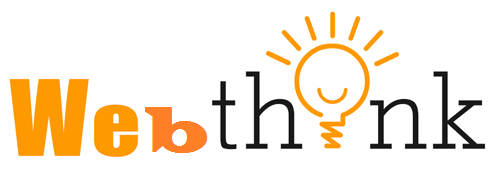How To Create A Reliable Cashflow Forecast For Your Business

Are you uncertain about how your income, expenses, and overall financial position will change in the future? Do you find it difficult to plan ahead for your business’s financial health? This guide explains how to create a cashflow forecast, one of the most essential tools for business owners to estimate cash inflows and outflows over time.
Cash flow forecasts are based on historical financial data, current income, and expected expenses. They can provide a clear picture of when and how money will move into and out of your business, helping you make informed decisions to maintain financial stability.
When well-prepared, a cash flow forecast can help businesses anticipate financial needs, manage resources effectively, and avoid cash shortages.
The Importance Of Cash Flow Forecasting
A cash flow forecast can offer several benefits, including improving financial planning, adapting to seasonal fluctuations, minimising financial risks, and allowing flexibility for business growth.
Understanding your cash flow also helps reduce financial risks. When businesses know their projected cash position, they can prioritise payments, avoid unnecessary debt, and make strategic financial decisions.
Another major benefit is typically improved budgeting. An accurate forecast can help businesses determine where to allocate funds efficiently, whether for operational costs, debt repayments, or growth initiatives.
It can also help identify when to delay expenses, seek additional financing, or reinvest in the business.
A great example is a company that uses a cash flow forecast to maintain enough working capital before a peak sales season. This can allow the business to fulfil all orders and other business needs without going into debt or accruing unexpected expenses later on.
This way, business owners might not be burdened by paying debt interest or surprised by a negative cash balance.
Here are some essential steps to starting building an effective cashflow forecast.
Step 1: Analyse Your Cash Inflows
Cash inflows usually refer to all incoming funds, including sales revenue, client payments, accounts receivable, tax refunds, and licensing fees.
To create an accurate cash flow forecast, you must first identify and quantify all sources of cash inflow. Regularly monitoring these inflows ensures you maximise available funds and make strategic decisions about resource allocation.
Using accounting software such as QuickBooks, MYOB, or Xero can simplify this process. These tools can provide automated financial reports, reducing manual tracking efforts and improving accuracy—especially for small business owners with limited time.
For instance, if a small company notices that a particular client frequently makes late payments, updating the cash flow forecast to reflect this pattern can help adjust financial planning accordingly.
This proactive approach can prevent overestimating available cash and enables better expense management.
From the updated projections, better financial decisions can be made, like being more cautious about making more purchases with cash.
Step 2: Assess Your Cash Outflows
Another vital part of a cash flow forecast is the cash outflows. It includes all outgoing cash, including fixed costs like rent, employee wages, and bills.
Accurately categorising and tracking these expenses ensures a realistic cash flow forecast. Fixed costs, like rent and salaries, remain constant, while variable costs, such as inventory purchases and seasonal marketing, fluctuate.
The financial tracking tools mentioned earlier can also help organise outgoing cash. Businesses may want to pay certain debts or bills first rather than other types of cash outflows.
For instance, a company reviewing past data may notice that advertising expenses rise significantly in the lead-up to Christmas, so they may want to adjust their yearly budget to accommodate these expenses.
Additionally, businesses should prioritise essential expenses to maintain liquidity. If cash flow is tight, deferring non-critical expenditures, negotiating supplier terms, or securing short-term financing may be necessary.
Step 3: Develop The Cash Flow Forecast
When making a cash flow forecast, remember that it should show future cash flow estimates over a specific forecasting period. Other factors, like previous forecasts, should also be considered.
A good cash flow forecast generally includes four key elements. These are the opening balance, estimated cash inflows, estimated cash outflows, and the net cash flow calculation/closing balance.
The opening balance, or opening bank balance, is the amount of cash a business has at the beginning of the period. Estimated cash outflows and inflows are data-driven estimates based on past periods.
The net cash flow or closing balance is determined by subtracting the total outflows from the total inflows, determining whether this generates profit or loss, and determining how much it affects the starting balance.
To develop an accurate cashflow forecast, use historical financial data to identify trends and seasonal variations. Businesses should review past performance to refine their projections and improve reliability.
For example, a restaurant that experiences lower sales during winter months can use historical data to predict slower periods and adjust operations accordingly. This will reduce unnecessary expenses and allow the restaurant to plan for potential revenue shortfalls.
Step 4: Implement And Monitor The Forecast
A cash flow forecast is only helpful if it’s actively monitored and updated. Therefore, businesses should consider regularly comparing actual performance with projections and adjusting their forecasts based on real-time data.
If sales exceed expectations, the forecast should be revised to reflect the additional revenue, allowing for more strategic financial decisions. Conversely, if cash inflows fall short, businesses should take immediate steps to control costs and maintain financial stability.
For example, an agency that relies on recurring client payments can use cash flow forecasting to identify late-paying clients and take proactive measures—such as implementing stricter payment terms or offering incentives for early payments—to improve cash flow.
Regularly reviewing the cashflow forecast can also help businesses detect potential financial challenges early. If projections indicate a cash shortfall, businesses can secure additional funding or adjust spending before issues arise.
Conclusion
Cash flow forecasting is one of the most effective financial tools available to businesses. By analysing cash inflows and outflows, companies can anticipate financial challenges, make informed decisions, and capitalise on growth opportunities.
A well-structured cash flow forecast can provide greater control over business finances, whether for short-term planning or long-term financial management. Though it may seem complex at first, regular monitoring and constant updates can ensure its accuracy and effectiveness.
With a proper cashflow forecast, businesses can have more flexibility and control over finances. This will allow them to avoid negative cash flow and continuously grow into the future.







